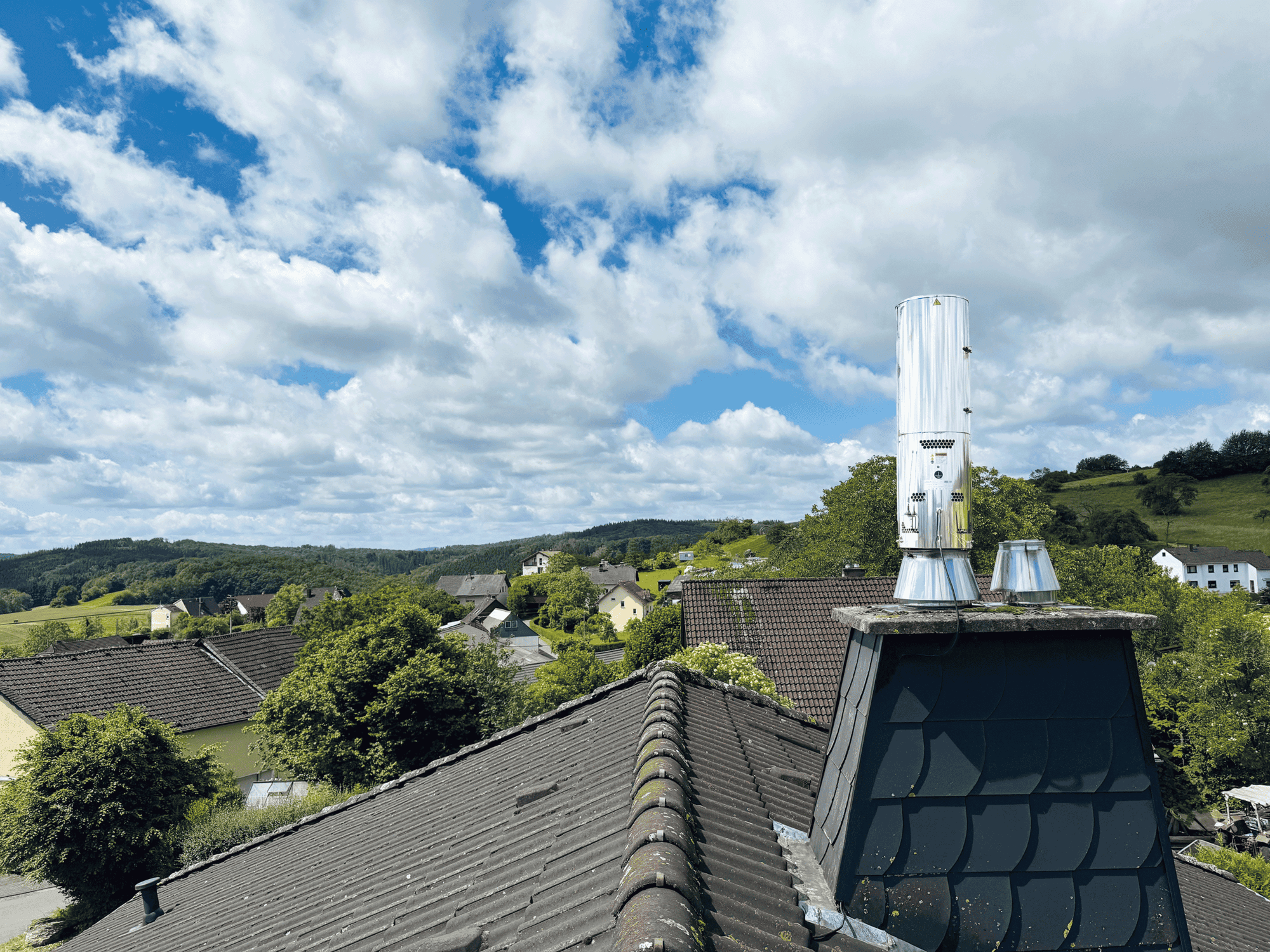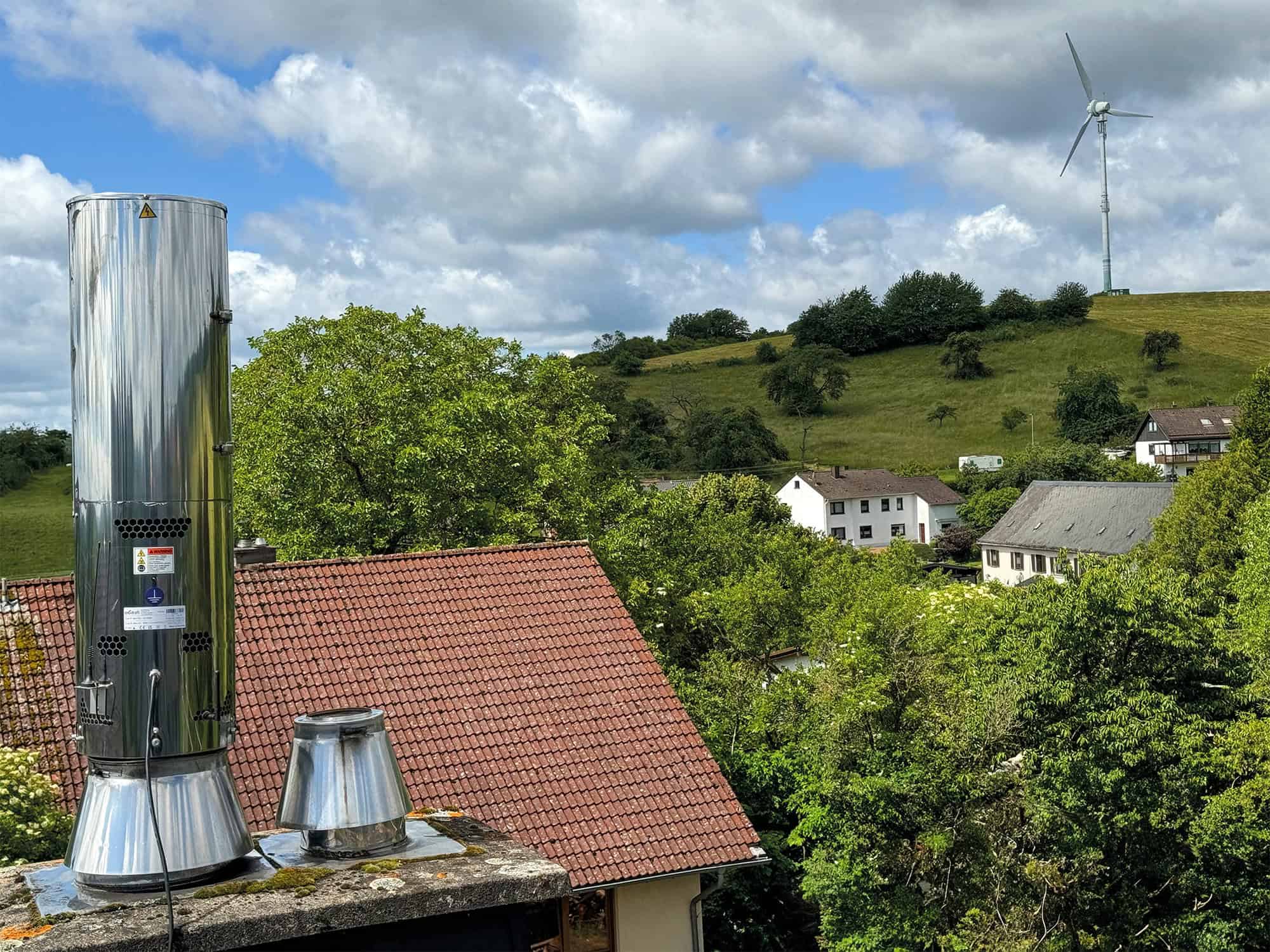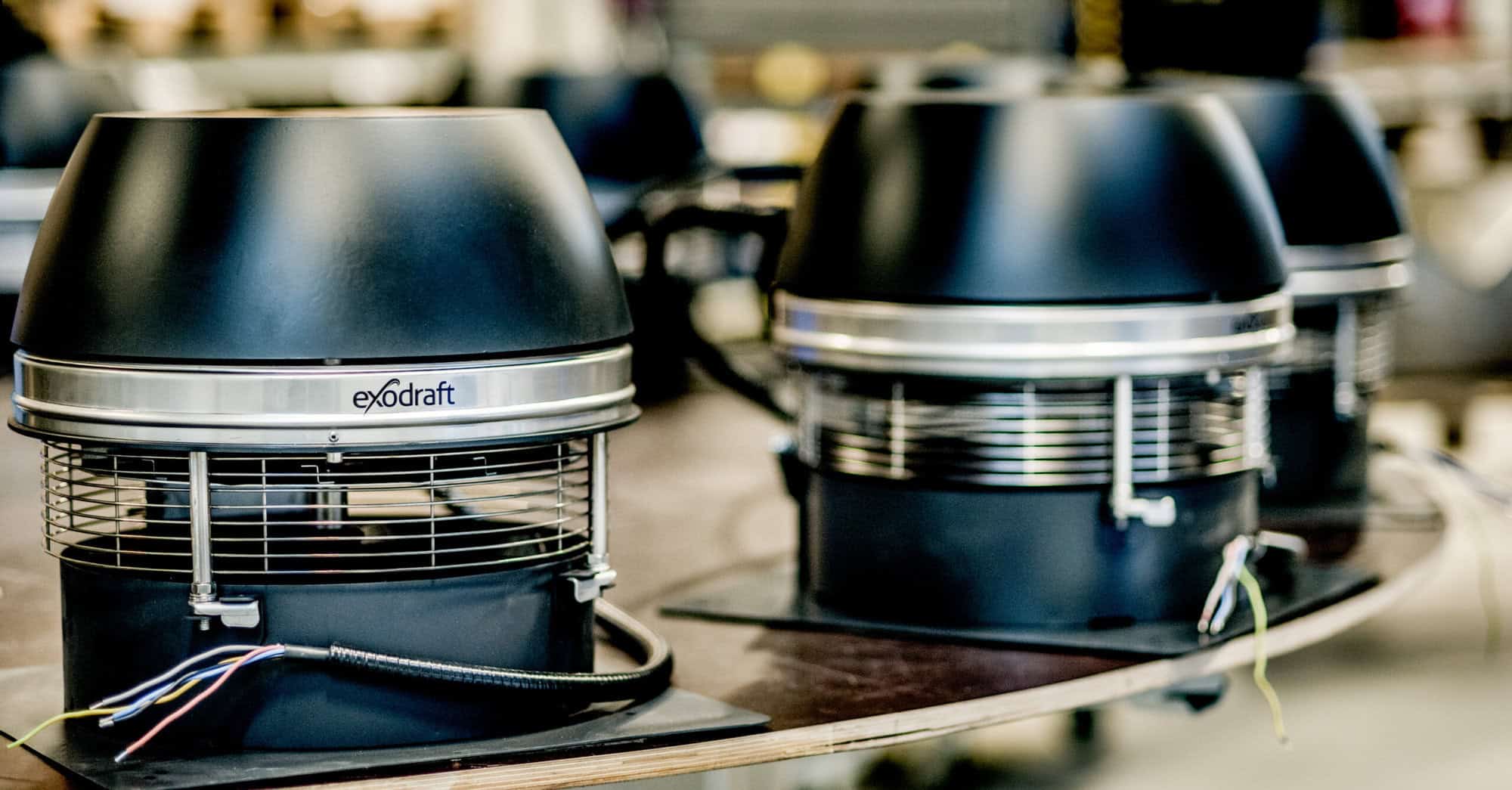Article
15. maj 2025 · 6 min
Why Is It Not Advisable to Use a Wood Stove?
Concerned about wood stove emissions? Learn why fine particles and carbon monoxide from wood burning can affect your health—and how an electrostatic filter can reduce pollutants by 95%.

Wood-burning stoves have long been a popular heating source, valued for their cosy warmth and energy independence. However, increasing awareness of air pollution and indoor health risks has led to concerns about their impact on air quality and human health. Burning wood releases fine and ultrafine particles, soot, and harmful gases, which can accumulate indoors and affect both the immediate household and the surrounding environment.
One of the most pressing concerns is particulate pollution, which can be divided into fine particles (PM2.5) and ultrafine particles (UFPs). Fine particles measure less than 2.5 micrometres in diameter, small enough to penetrate deep into the lungs. Ultrafine particles, which are even smaller at less than 0.1 micrometres, can enter the bloodstream and affect vital organs such as the heart and brain. Exposure to these particles has been linked to respiratory issues, cardiovascular diseases, inflammation, and other long-term health complications.
Even modern, eco-labelled wood stoves emit significant amounts of fine and ultrafine particles, which linger in the air and pose health risks. Without proper filtration, these pollutants can accumulate indoors, worsening air quality and increasing exposure levels for those inside the home.
To address these challenges, advanced filtration technology now provides an effective solution. Exodraft’s ESP-10 electrostatic particle filter is specifically designed to reduce 95% of fine and ultrafine particles emitted by wood stoves.
How to Reduce Harmful Particles from a Wood Stove?
While wood stoves provide warmth and comfort, they also generate harmful fine and ultrafine particles that impact indoor and outdoor air quality. To address these concerns, the most effective solution is to install an electrostatic particle filter, which actively reduces emissions before they are released into the air.
An electrostatic filter works by applying a high-voltage charge to the fine and ultrafine particles in the flue gas. This process causes the particles to cluster together and stick to the collection grid, preventing them from being emitted into the air. Unlike traditional filtration methods, this advanced technology is highly effective at capturing even the smallest particles, ensuring cleaner air inside and around the home.
The Exodraft ESP-10 electrostatic particle filter reduces 95% of fine and ultrafine particles and lowers total particle mass by 70-75%. Installed at the top of the chimney, where the flue gas is at its coldest, it maximises efficiency by ensuring that harmful emissions are neutralised before they exit the chimney.
In addition to reducing emissions, an electrostatic filter also contributes to a better indoor environment, particularly for individuals with asthma, allergies, or respiratory conditions. By significantly cutting down on airborne pollutants, homeowners can continue to enjoy the benefits of a wood stove without compromising on health and air quality.
Health Risks Associated with Wood Stoves
While wood-burning stoves create a warm and inviting atmosphere, they also pose significant health risks due to their emission of fine and ultrafine particles, as well as gases like carbon monoxide and volatile organic compounds (VOCs). These emissions can have both short-term and long-term effects on human health, particularly in homes with inadequate ventilation or poor draught control.
Respiratory Issues and Airborne Particles
The most immediate concern with wood stoves is the release of fine (PM2.5) and ultrafine particles (UFPs), which are small enough to bypass the body’s natural defences and penetrate deep into the lungs. Once inhaled, these particles can cause:
- Irritation of the airways, leading to coughing and shortness of breath.
- Aggravation of asthma and allergies, especially in children and the elderly.
- Long-term lung damage, increasing the risk of chronic respiratory diseases.
Carbon Monoxide Poisoning
Incomplete combustion in a wood stove can lead to the release of carbon monoxide (CO), a colourless and odourless gas that can be deadly in high concentrations. Symptoms of CO poisoning include:
- Headaches, dizziness, and confusion.
- Nausea and shortness of breath.
- Loss of consciousness in severe cases.
Proper chimney draught management and ventilation are essential in preventing CO buildup inside the home.

Improving Indoor Air Quality with the Right Technology
Wood stoves contribute to indoor air pollution through fine and ultrafine particles, which can negatively impact health and air quality. However, advanced filtration technology offers an effective way to significantly reduce these emissions and create a healthier indoor environment.
Electrostatic Filtration: Reducing Harmful Particles
One of the most effective ways to combat fine and ultrafine particle pollution is by using an electrostatic particle filter. Unlike traditional filters, which can become clogged, an electrostatic filter works by charging particles in the flue gas, causing them to cluster together and stick to a collection grid. This process reduces:
- 95% of fine and ultrafine particles, significantly improving air quality.
- Soot buildup, keeping stove glass cleaner and reducing maintenance.
By installing an Exodraft ESP-10 electrostatic particle filter, homeowners can enjoy the warmth of a wood stove without compromising air quality.
Additional Benefits of Emission Reduction Solutions
Beyond improving air quality and health, installing an electrostatic particle filter provides several practical advantages for wood stove users. By reducing emissions and ensuring optimal combustion, homeowners experience less maintenance, better efficiency, and compliance with environmental regulations.
Reduced Maintenance and a Cleaner Stove
- Less soot accumulates on the stove’s glass, keeping it clear for longer.
- Chimney maintenance is reduced, as fewer particles are deposited in the flue.
- The filter’s self-cleaning function eliminates manual upkeep, making operation hassle-free.
Improved Combustion and Fuel Efficiency
- Lower emissions, as improved combustion produces fewer unburned particles..
- Easier ignition and more stable burning conditions.
- Better fuel efficiency, meaning less wood is needed for the same heat output.
Conclusion
Although wood stoves remain a popular heating choice, their impact on indoor air quality and outdoor emissions cannot be ignored. Fine and ultrafine particles, as well as harmful gases, pose risks to both those inside the home and the surrounding environment.
By installing an electrostatic particle filter, homeowners can reduce harmful emissions by 95%, ensuring cleaner indoor air, lower maintenance, and better combustion efficiency. Combined with stable chimney draught, this solution allows users to enjoy the benefits of a wood stove without the common drawbacks.
For those looking to improve air quality, efficiency, and compliance, an Exodraft dealer can provide expert guidance on the best solutions for emission reduction.

exodraft







